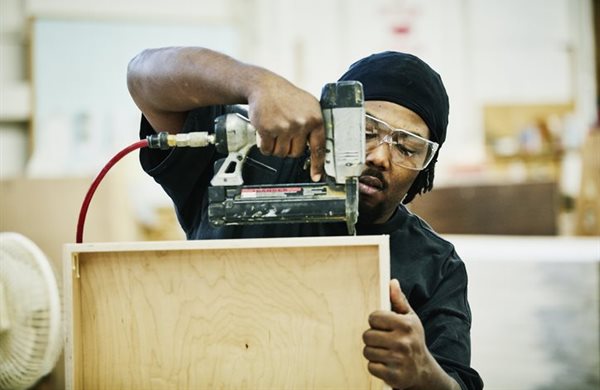
The roadshow travelled from the Western Cape to Gauteng, Mpumalanga, KwaZulu-Natal and the Eastern Cape to meet with local manufacturers of all sizes and other stakeholders in the furniture value chain to discuss the initial research done in the form of a Situational Analysis, including challenges and opportunities, with them. These inputs will now be compiled into a comprehensive feedback document on which the final FIMP will be based.
“By completing our national roadshow in early February, we have kept our promise of following a very aggressive timeline and to expedite the creation of an industry masterplan,” says Bernadette Isaacs, chief operating officer of SAFI.
“We are particularly proud of the fact that our roadshow included previously underserviced areas such as Mpumalanga and the Eastern Cape and it managed to attract manufacturers of all sizes, suppliers and other role players.”
The furniture manufacturing sector is a significant contributor to job creation and South Africa’s gross domestic product. The industry employs approximately 26 000 people and is responsible for 1% of the country’s GDP.
While it is a major contributor to South Africa’s manufacturing sector, the furniture manufacturing industry is highly fragmented. Unlike the automotive industry, which has a small number of large manufacturers, the furniture sector is made up of over 2,200 manufacturers with an average employment figure of 13 people per plant.
With the proposed FIMP, the government and industry bodies such as SAFI hope to guide future industrial development, the creation of supportive policies and the growth of the industry through export promotion. They also hope to guide transformation in the industry.
“The diverse nature of this industry has posed a challenge to the team of FIMP consultants to collect comprehensive feedback from a representative section of the industry. But at the same time, that means that any positive results from the implementation of the FIMP will impact a very large group of manufacturers and their employees,” says Isaacs.
Isaacs explains that even a marginal improvement in the turnover of over 2,200 manufacturers will ratchet the positive economic impact, leading to more employment, investment and manufacturing output.
“With industry master plans such as the South African Retailer, Clothing, Textiles, Footwear and Leather CTFL Masterplan (SA R-CTFL MP) and the South African Automotive Master Plan, government has shown its intention of supporting the South African manufacturing sector by creating an environment conducive to long-term planning and investment. We trust that the FIMP will do the same for our sector,” says Isaacs.